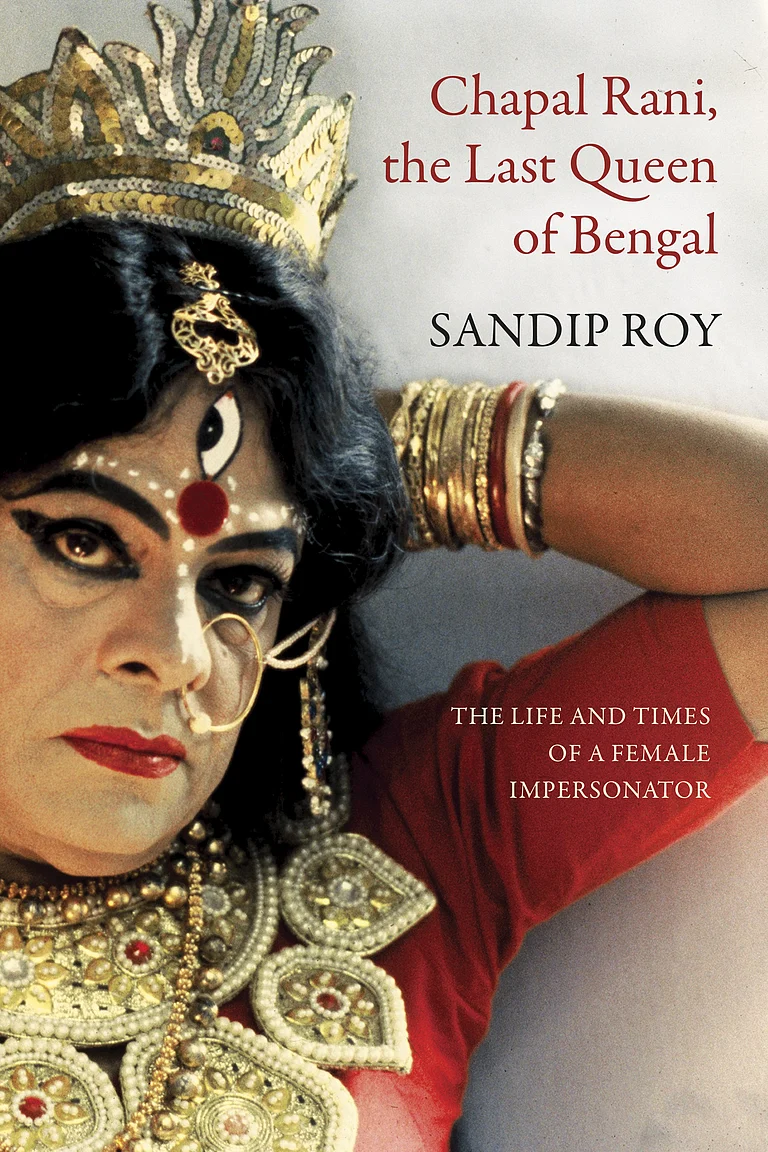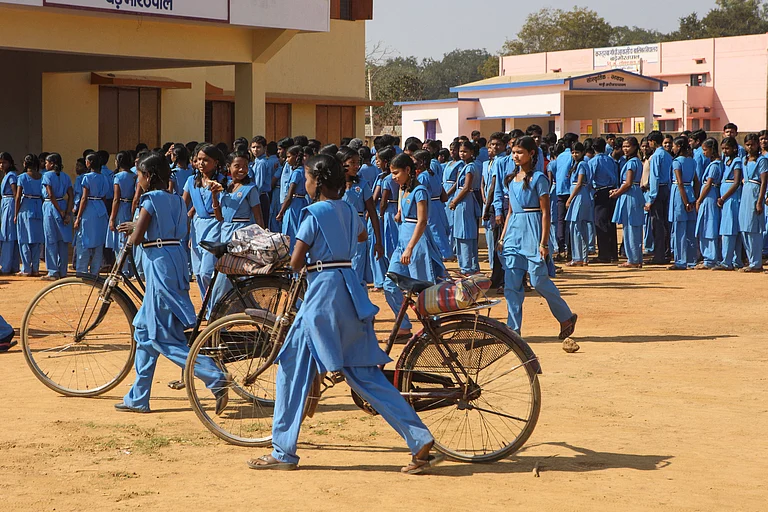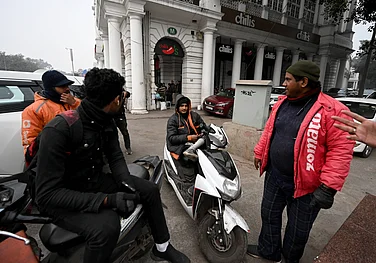“Eid ka commitment tha, Eid par hi aayenge kyun ki ek baar jo maine…” [I committed to an Eid release (of my film), and Eid release it will be, because once I make a commitment…]
In the oft-repeated dialogue from his 2008 hit, Wanted, Salman Khan’s character said he never backtracks once he makes a commitment. True to his larger-than-life persona, Bhaijaan’s latest big budget entertainer Radhe: Your Most Wanted Bhai is releasing on May 13, to coincide with Eid this year. Also in line with his on-screen image, the release will follow an unusual and uncharted path by going “hybrid”—premiering simultaneously in theatres worldwide as well as on over-the-top (OTT) and direct-to-home (D2H) digital platforms—something that has been tried out by Hollywood, but will be a first in India.
Back in March, when Salman had sent legions of his cultists into raptures by announcing the release of Radhe on Eid, little did he know what lay ahead. The second wave of Covid has since forced lockdowns, night curfews and other restrictions in many states, dealing another crippling blow to the industry still struggling to recover from aftershocks of last year’s Covid wave.
Film finance experts are wondering if it is not risky to release a big-budget venture when most theatres in the country are shut due to COVID-19, and the possibility of a nationwide lockdown looms large. Salman’s bookkeepers, though, appear confident with their strategy, expecting it to be a game-changer.
Radhe will be shown on big screens following Covid protocols wherever theatres are still operational. It will also have an international release in as many as 40 countries, including the UK, where it will be the first Bollywood film to have a theatrical release since the lockdown last year.
But the real buzz around the hybrid release in the film industry is with Radhe’s simultaneous release on digital platforms—ZEE’s pay-per-view ZEEPlex as well as several leading D2H channels—where viewers will have to pay Rs 249 per view.
The jury is still out if this is the best bet for the industry under the present circumstances, but stakeholders who have collaborated with Bollywood’s hit machine exude optimism. “The pandemic forced us to innovate, and we are proud to be the first to embark upon this strategy,” says Shariq Patel, chief business officer of Zee Studios, which is releasing Radhe. “While we all love to catch the latest movies in theatres, we realised we would be doing Salman’s fans a disservice if we aren’t able to release theatrically in all Indian states. We sensed the need for a pay-per-view solution on the side.”
Manish Kalra, the chief business officer of ZEE5 India, agrees. “Salman’s films are family entertainers, which appeal to audiences across demographics. Radhe is one of the biggest releases of the year and we are proud to launch it on ZEE5 in a multi-format model.”
A Salman Khan Films spokesperson said in a statement: “It’s imperative for everyone to come together and think of out-of-the-box solutions for the industry during the pandemic. We’ll support theatre owners by releasing the film in as many theatres as possible. But, considering Covid protocols, we also need to devise ways to ensure the film reaches out to our audience. We don’t want to deny them the choice of entertainment in the safety of their homes.”
Salman’s ‘daring’ move comes at a time when the makers of several other big budget films, which were scheduled for release in April-May—such as Akshay Kumar’s Sooryavanshi, John Abraham’s Satyamev Jayate, Kangana Ranaut’s Thalaivi and Farhan Akhtar’s Toofan—have chosen to hold back. Clouds of uncertainty also hover over the release of two other big ones—Akshay Kumar’s Bell Bottom and Ranveer Singh’s 83.
Rohit Shetty’s extravaganza Sooryavanshi, which also stars Ajay Devgn, Katrina Kaif and Ranveer Singh, and Kabir Khan’s 83, based on India’s triumph at the 1983 ICC World Cup, are on hold for over a year now. As the delay has been causing substantial losses to their makers, everyone is eagerly awaiting to see the fate of Bhaijaan’s model. After all, Radhe’s success or failure will determine whether other stars and film-makers will take a similar route.
Speculation is already rife that Sooryavanshi may be next in line to get a hybrid release. Shetty’s multi-starrer has had two back-to-back setbacks. Last year, it was set to release on March 24, when the nation went into a lockdown. When the situation eased and theatres were allowed to reopen earlier this year, it was slated for an April 30 release. But, as fate would have it, the second wave forced it to be deferred once again.
Big OTT players are learned to have offered astronomical amounts for the rights of both films, but the makers of Sooryavanshi and 83 have reiterated their movies are meant for the big screen. Kabir Khan, director of 83, says they are ready to wait for things to get normal. The million dollar question is: when will normalcy return?
Till then, will Salman’s gamble emerge as a game-changer, or will Radhe turn out to be a party pooper, especially for theatres that are already in dire straits? Multiplex owners are already on the warpath against filmmakers who are releasing their movies on OTTs, because it is harming their businesses.
The Salman camp believes while Radhe’s release on digital platforms gives audiences the choice to enjoy the film from the comfort of their homes, it may also prove to be a win-win for theatre owners and distributors. “While most producers are shying away from releasing films in theatres, Salman has chosen to use his stardom to lift the film industry out of its slump, and also revive exhibition and distribution chains,” says a source close to the 55-year-old actor. “Salman Khan has kept his promise to theatre owners and exhibitors who had requested a theatrical release for Radhe. This decision is courageous. The movie business has been in a recession and someone had to bite the bullet. Hopefully, others will emulate him soon.”
Not everyone is sure. Senior film analyst Deepak Dua says pay-per-view culture is yet to catch on among Indian movie buffs, and last year’s OTT bubble has also burst. “Some smaller movies have gone for this model before, but they did not get enough viewers,” Dua says. “Going to a theatre to watch a film is a picnic for families and friends in India. They can splurge Rs 2,000 on that, but won’t pay Rs 250 to watch it at home. People do not even want to pay Rs 49 to watch a film.”
According to Dua, some big films like Akshay Kumar’s Lakshmi (2020) and Amitabh Bachchan’s Gulabo Sitabo (2020), when released directly on OTT last year, did not meet the trade’s expectations. “Regardless of their quality, they would have performed better with theatrical releases, because of the first weekend collections. As far as Salman is concerned, his fanbase predominantly consists of those who throng theatres to watch his films in a festive atmosphere. OTT is not suitable for his brand of films. A movie on OTT platforms picks up only on word-of-mouth publicity. Going by the track record of Salman’s recent films, it looks next to impossible for Radhe to garner that.”


























